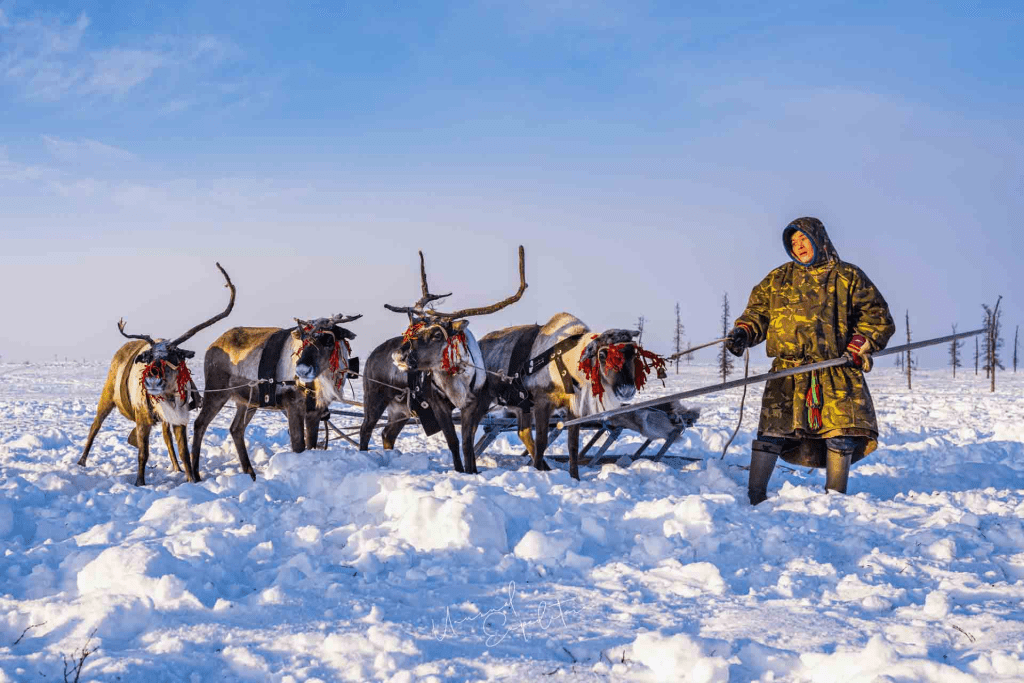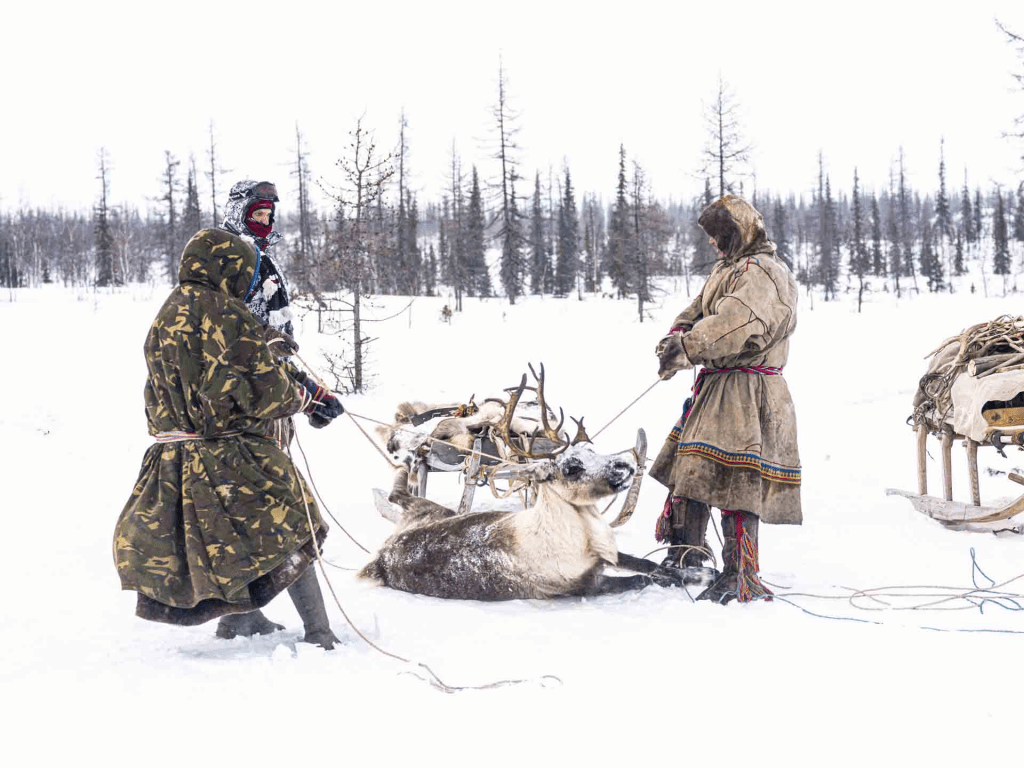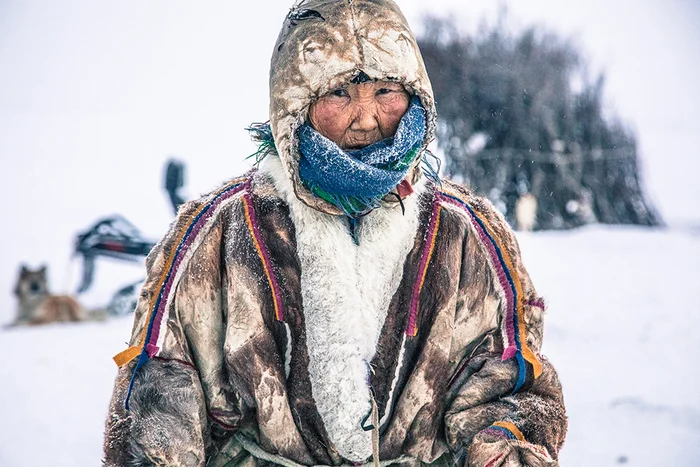The Nenets people, one of the oldest and most resilient cultures of the Arctic, have withstood centuries of challenges. From the relentless freezing winds to the shifting empires that have attempted to claim their lands, the Nenets have managed to hold on to their traditional way of life. With a deep connection to the land, their survival revolves around reindeer herding, and their unique way of living provides insight into how humanity can adapt to some of the harshest climates on Earth.

The Ancient Nomads of the Arctic
The Nenets, who primarily inhabit the Russian Arctic regions of Siberia, are one of the last great nomadic cultures in the world. Their history stretches back thousands of years, and they are intricately linked to the land and animals they rely on for sustenance. With the world’s northernmost tundra as their home, the Nenets have learned to thrive in an environment where few other human societies could survive.

Their migration patterns are tied to the seasonal needs of their reindeer herds. The reindeer are more than just a source of food; they provide everything from clothing and shelter to transportation. The Nenets’ deep knowledge of the land allows them to move in harmony with the natural rhythms of the Arctic.
A Way of Life Centered Around Reindeer Herding
At the heart of Nenets culture is reindeer herding. These magnificent creatures are central to nearly every aspect of their daily life. The Nenets’ reindeer provide them with milk, meat, and skins, and they also serve as pack animals during the long migrations that follow the seasons.
Video:
How people survive in FAR NORTH of RUSSIA? Yamal. Nomads Nenets
The Nenets’ reindeer herding practices are an extraordinary testament to the enduring connection between people and animals. The herders are skilled at reading the behavior of the animals, knowing when to move them to new pastures and how to protect them from the many dangers of the Arctic.
While the reindeer are central to their livelihood, the Nenets also rely on other elements of nature, like the fishing and hunting that sustain them during the long winters. However, it is the reindeer that remain the backbone of their culture, and their continued survival depends on these herds.
The Chum: A Symbol of Tradition
One of the most iconic aspects of Nenets culture is their unique dwellings, known as chums. These cone-shaped tents are built with wooden frames and covered with reindeer hides. The chums are not only practical, providing warmth and shelter in the freezing Arctic temperatures, but they also hold cultural significance. They are a place where families come together, and they represent the nomadic nature of Nenets life.
The structure of the chum is perfectly designed for the Nenets’ seasonal migration. When it’s time to move, the chum can be dismantled and carried on sleds by reindeer, allowing them to follow the herds through the wilderness. In this way, the chum serves as a symbol of the Nenets’ resilience and adaptability in a world that continues to change around them.

Facing Modern Threats and a Changing Climate
Despite their long-standing traditions, the Nenets now face modern challenges that threaten their way of life. The industrialization of the Arctic, particularly the expansion of oil and gas exploration, has encroached on the lands that the Nenets rely on. Pollution, as well as the disruption of migration routes by heavy machinery, has made herding more difficult than ever.
The impact of climate change is another looming threat. Rising temperatures in the Arctic have altered the natural environment, making it harder for reindeer to find food in the winter months. Additionally, thawing permafrost affects the terrain, causing further disruption to the Nenets’ migration routes. These changes pose a direct threat to the survival of the reindeer herds and, by extension, the Nenets themselves.
Resilience in the Face of Adversity
Even in the face of these modern threats, the Nenets continue to fight for their way of life. They are not simply passive victims of the world around them; they are actively seeking ways to preserve their traditions. One important aspect of this is the Nenets’ efforts to assert their land rights and protect their environment. Many members of the community have become advocates for sustainable practices and are working to raise awareness about the importance of preserving the Arctic ecosystem.
Video:
Experiencing Nenet Life On The Frozen Tundra – Tribe With Bruce Parry – BBC
Despite the challenges, the Nenets’ cultural identity remains strong. Their deep connection to their reindeer herds and their nomadic lifestyle continues to be a source of pride. The Nenets people have proven that, even in the most inhospitable corners of the world, human resilience and a strong cultural bond can endure.
A Living Legacy
Today, the Nenets serve as a powerful reminder of the resilience of indigenous cultures in the face of modern challenges. Their ability to adapt to the harshest environments while maintaining their traditions is nothing short of remarkable. However, as industrialization and climate change continue to threaten their way of life, it is vital for the global community to recognize the importance of supporting and preserving such cultures.
The Nenets have endured for thousands of years, and their story is one of strength, survival, and cultural pride. As they continue to face the challenges of the 21st century, they remain a symbol of the enduring spirit of the Arctic.



